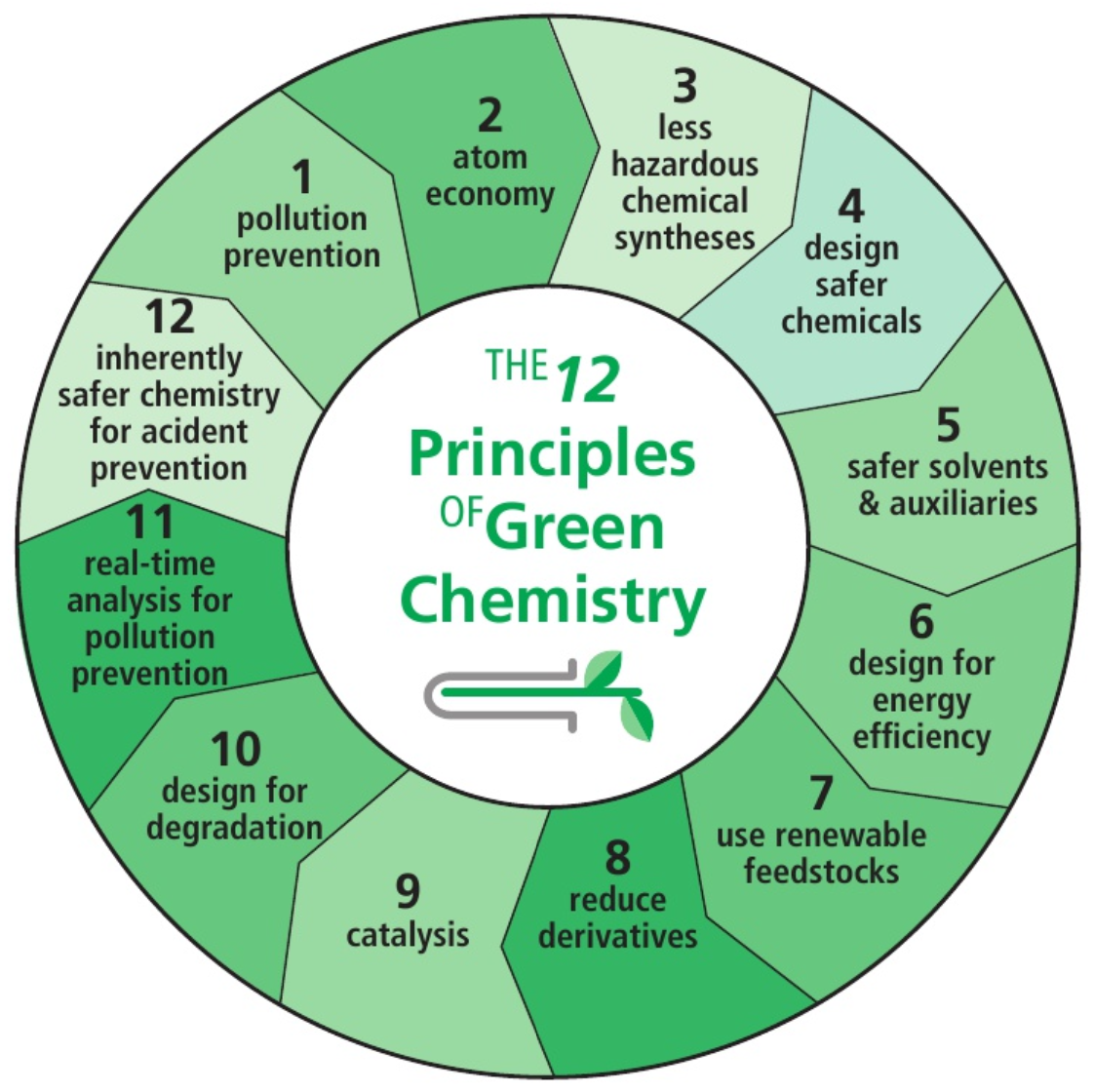Quote
‘Green chemistry is the utilisation of a set of principles that reduces or eliminates the use or generation of hazardous substances in the design, manufacture and application of chemical products.’
Green Chemistry: Theory and Practice, P. T. Anastas and J. C. Warner,
Oxford University Press, Oxford, 1998
these following principles applies across the life cycle of a chemical product, from design to ultimate disposal.
-
pollution prevention
it is better to prevent waste than to treat or clean up waste after it has been created -
atom economy
synthetic methods should be designed to maximise the incorporation of all materials used in the process into the final product -
less hazardous chemical synthesis
whenever practicable, synthetic methods should be designed to use and generate substances that possess little or no toxicity to people or the environment -
design safer chemicals
chemical products should be designed to effect their desired function while minimising their toxicity -
safer solvents and auxiliaries
the use of auxiliary substances (e.g. solvents or separation agents) should be made unnecessary whenever possible and not harmful when used -
design for energy efficiency
energy requirements of chemical processes should be recognised for their environmental and economic impacts and should be minimised. if possible, synthetic methods should be conducted at ambient temperature and pressure -
use of renewable feedstocks
a raw material or feedstock should be renewable rather than being used up whenever technically and economically practicable -
reduce derivatives
unnecessary derivatisation (use of blocking groups, protection/de-protection, and temporary modification of physical/chemical processes) should be minimised or avoided if possible because such steps require additional reagents and can generate waste -
catalysts
catalytic reagents (as selective as possible) are superior to stoichiometric reagents -
design for degradation
chemical products should be designed so that at the end of their function they break down into harmless degradation products and do not remain in the environment -
real-time analysis for pollution prevention
analytical methods need to be further developed to allow for real-time, in-process monitoring and control prior to the formation of hazardous substances -
inherently safer chemistry for accident prevention
substances and the form of a substance used in a chemical process should be chosen to minimise the potential for chemical accidents, including releases, explosions and fires
